Abstract
Self-reinforcement in operant situations generally refers to those arrangements in which the subject delivers to himself a consequence, contingent on his behavior. However, it is noted that the definition of all other types of reinforcement make its delivery contingent on the subject's behavior. What is actually at issue is the agent who defines whether or not the response required for reinforcement has been met. In self-reinforcement, the subject himself defines this. In the laboratory, this requirement is machine-defined; in school examinations, it is teacher-defined; and in many clinical self-control situations, it is also independently defined. A reinforcement contingency presupposes such independence, absent in self-reinforcement. Implications for research and practice are discussed and alternative formulations are offered.
Keywords: reinforcement, self-reinforcement, self-control, defining agency, response requirements
Full text
PDF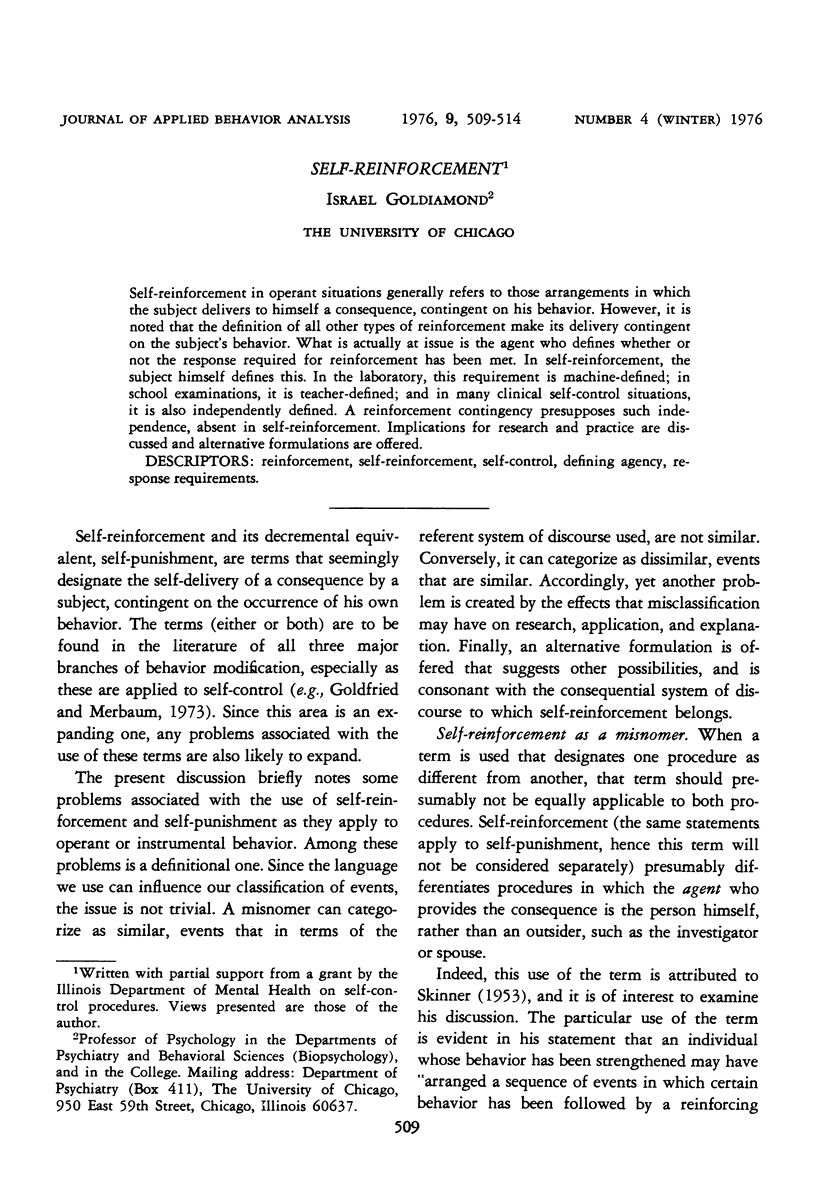
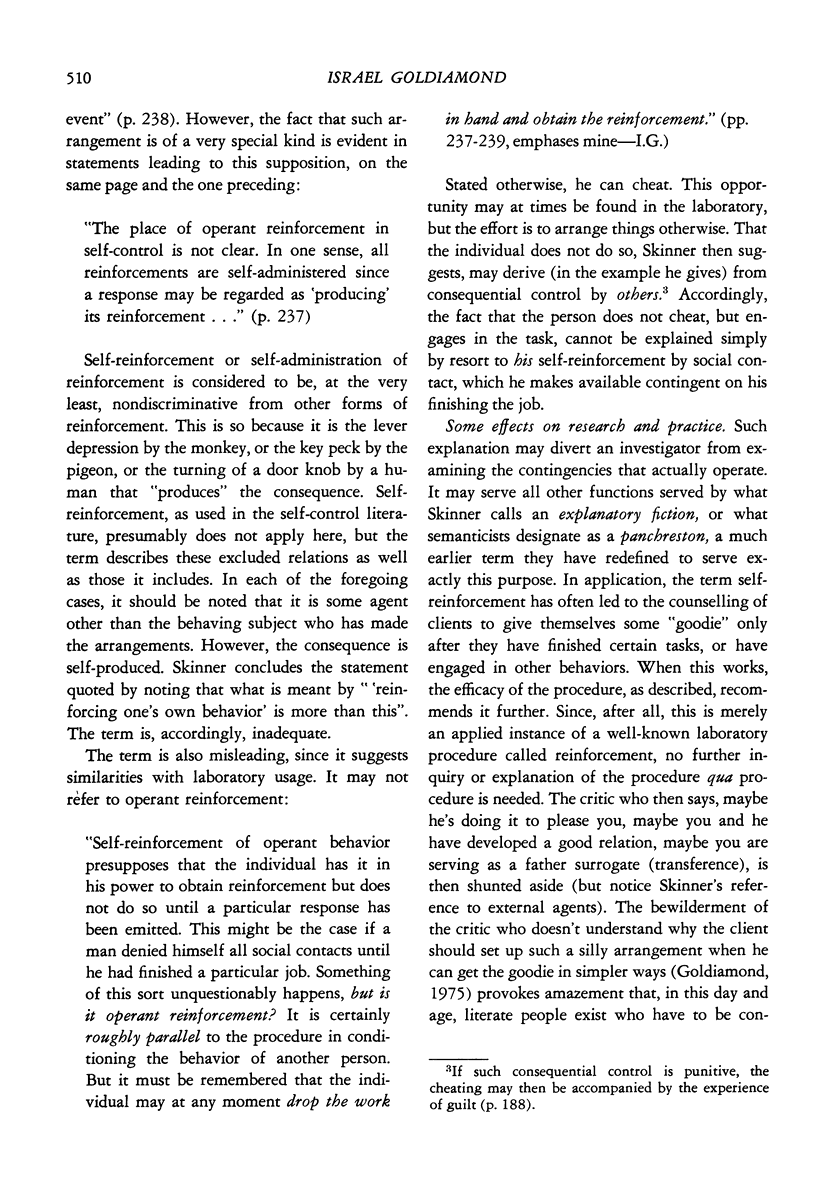
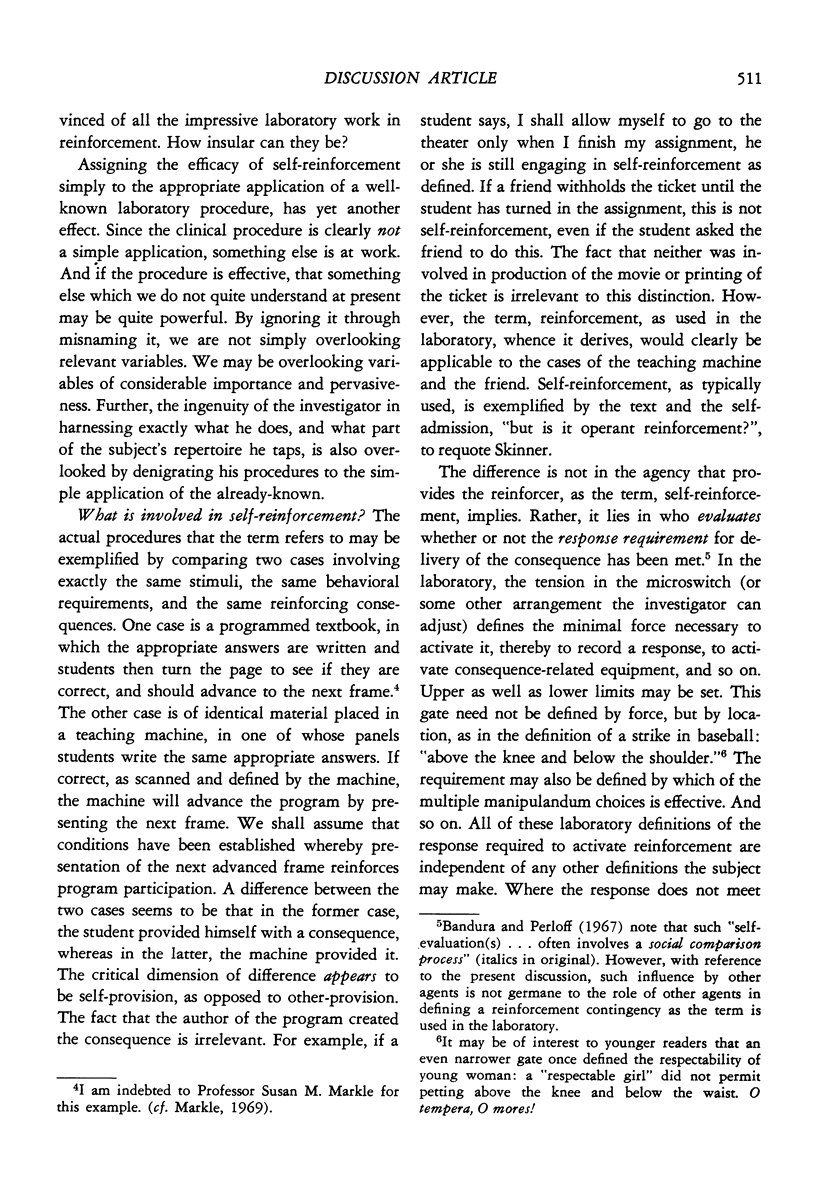

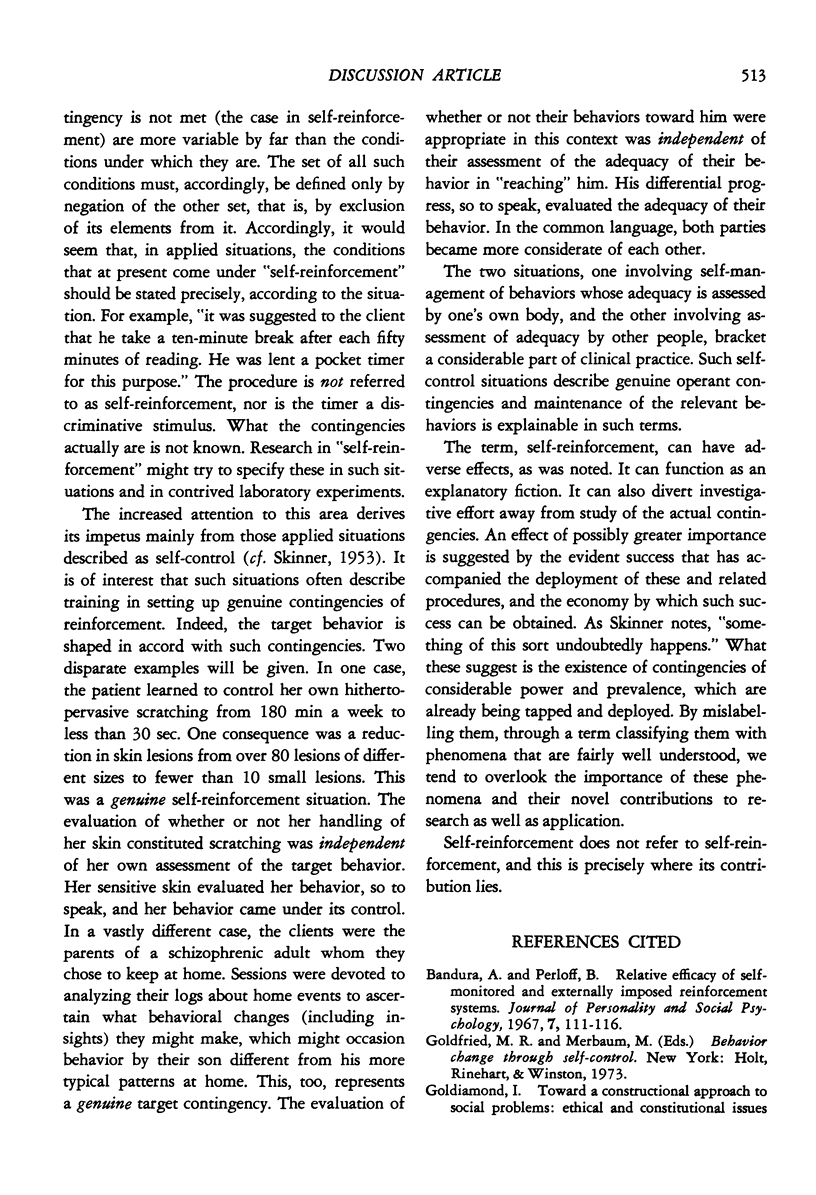
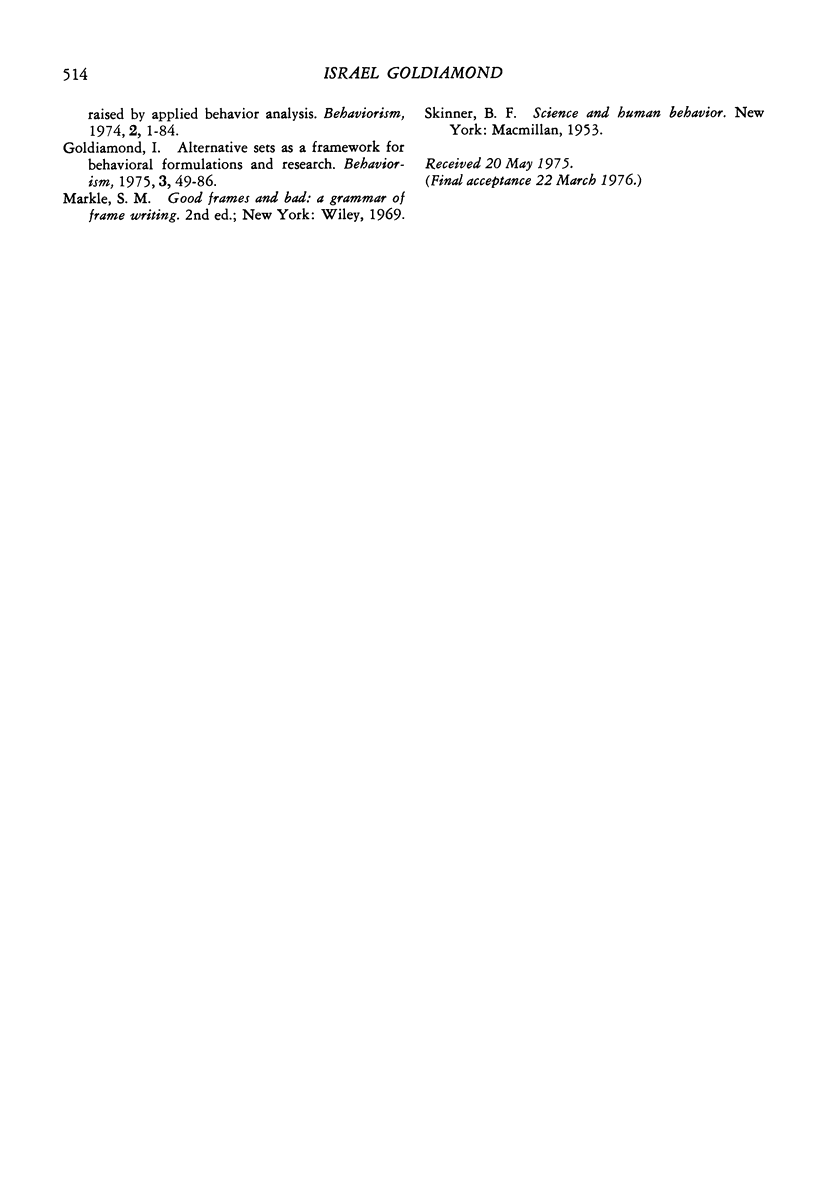
Selected References
These references are in PubMed. This may not be the complete list of references from this article.
- Goldiamond Israel. Toward a constructional approach to social problems: ethical and constitutional issues raised by applied behavior analysis. Behaviorism. 1974 Spring;2(1):1–84. [PubMed] [Google Scholar]


